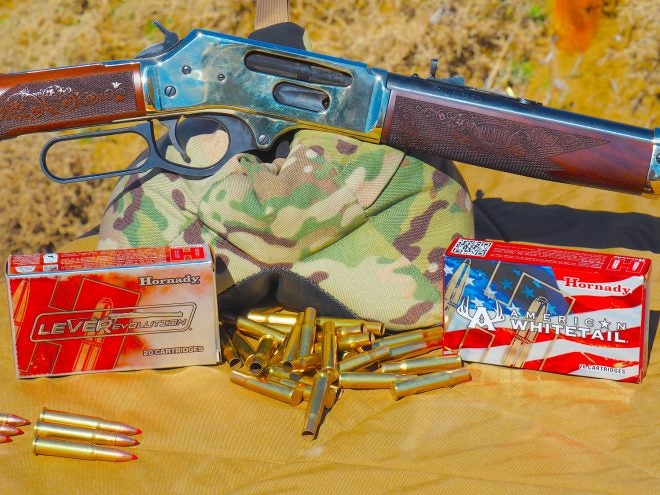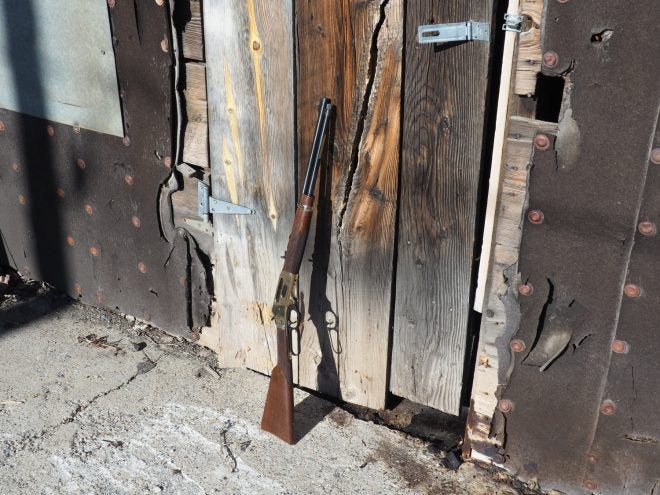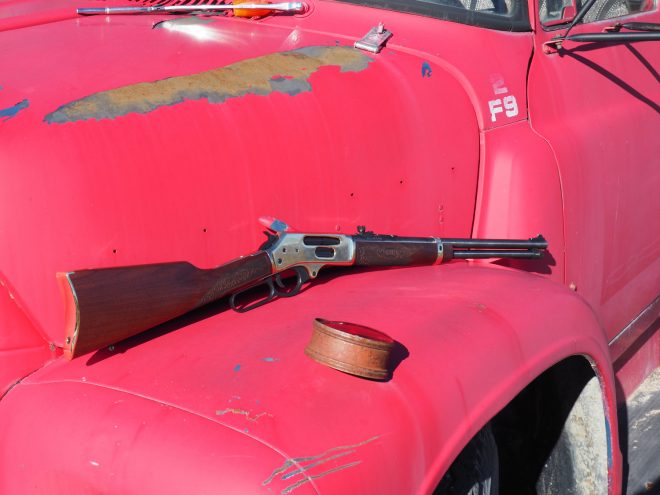Long requested, finally realized
Gates are a constant part of life on a ranch or farm. Keeping stock in or out of areas, water where it is supposed to go, and intruders off your land. If you had a Henry Rifle, however, there was one place where a gate wasn’t found: on the side of the receiver. Henrys are very well US-made firearms. Every one that I’ve reviewed has performed quite well. However, one significant aspect that has kept many consumers hesitant to purchase a Henry over a Marlin, Mossberg, Winchester or one of the many Italian leverguns is that previous models of Henry rifles lacked a side loading gate. While the Henry tube system is far safer for unloading the firearm, my own quibble about this feature is that it is not as convenient for loading in inclement weather or field conditions as a side loading gate.
Henry has honored the requests of many and has now released the H024 “Cowboy Carbine” series of firearms, all featuring a side loading gate. The Cowboy Carbine is initially available in .30-30, .38-55, and .35 Remington with 20″ barrels. Henry is planning on offering firearms with the side loading gate in many other calibers, stocks, barrel lengths and finishes as well.
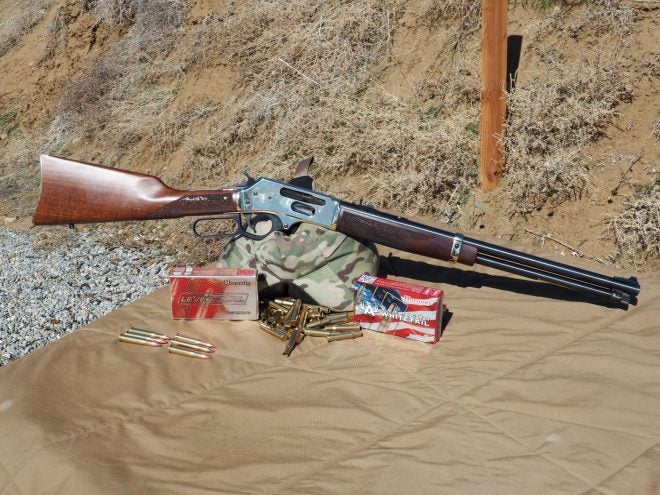
The new H024 Cowboy Carbine
Specs:
- Model: H024
- Receiver: Hardened Brass W/ Polished Brass Finish, drilled and tapped for Weaver 63B mount
- Capacity: 5 rnd
- Barrel: 20″ Round Blued Steel, 1:12 for the .30-30, 1:18 for .38-55
- OAL: 38.3″
- LOP: 14″
- Stock: Straight grip American walnut
- Weight: 7.5lbs
- Sights: Rear: Fully adjustable semi-buckhorn w/diamond insert, Front: Ramp w/.062″ ivory bead
- Safety: Transfer Bar
- MSRP: $925.00
initial impressions
The Henry Cowboy Carbine looked like any of their other hardened, polished brass receiver firearms, with the notable addition of the new side loading gate cut into the side of the receiver. The loading gate spring is held in place via a single screw much like what one would see on a Marlin or Winchester. The gate itself is very nicely radiused, without any sharp edges that could catch on a cartridge or one’s thumb. The loading gate spring feels lighter weight, more polished and smoother in operation than a stock Marlin spring, but not quite as light as Ranger Point Precision’s excellent flyweight spring.
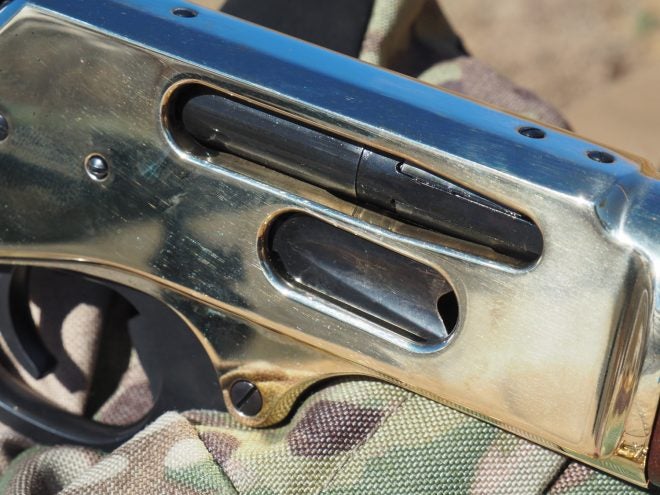
Very well done loading gate
Interestingly enough, should one want to load or unload the traditional Henry way via the cutout in the magazine tube, one can still do so. The magazine tube is like any other Henry and can be removed with a simple twist. With the loading gate, one can have the best of both worlds – one can quickly load or top off the magazine via the side loading gate and uniquely to the Henry one can also quickly and safely unload the levergun by sliding the interior magazine tube out of the rifle, rather than cycling cartridges in and out of the chamber.
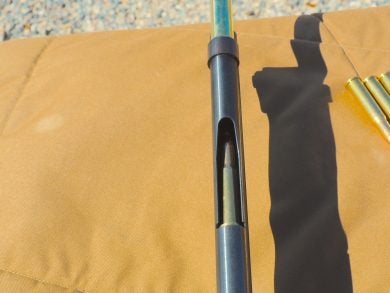
The traditional Henry method of loading still exists – more importantly, it’s the safest way to unload tube magazine lever actions
The American walnut straight grip stock and forend feature excellent checkering with some very nice and tasteful scrollwork. The forend scrollwork encompasses “Henry” in an oval. A 20″ blued steel barrel (in 1:12 for the .30-30) is topped off by an adjustable buckhorn rear sight and a .062″ ivory bead front sight. The receiver is drilled and tapped for mounting scopes or a peep sight, should one want to do so. Overall, it makes for a very handsome package.
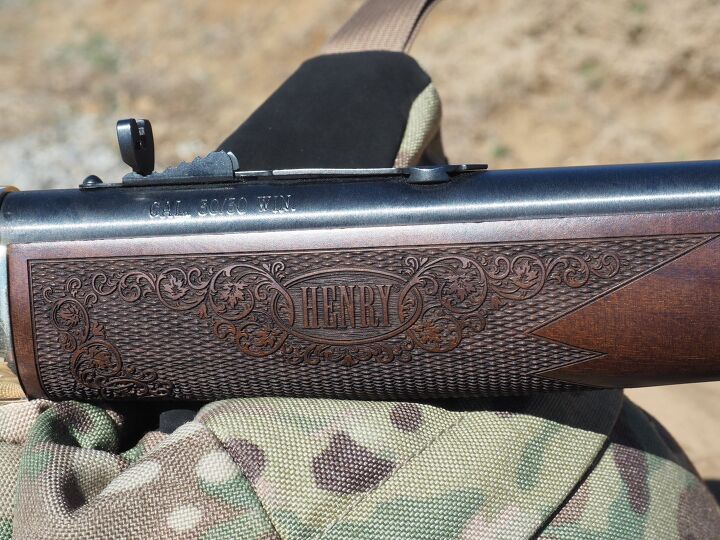
Forend engraving
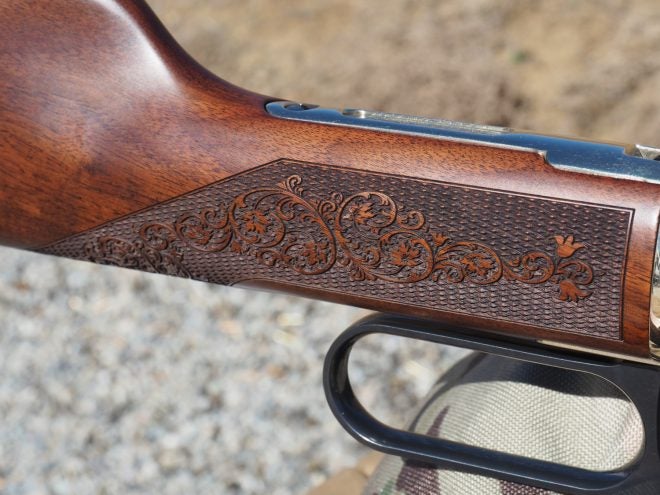
Stock engraving
Another interesting facet: The closest .30-30 Henry makes is a Brass receiver with an octagon barrel for $998 MSRP. There is no significant upcharge to the customer for the extra parts and machining required to include the loading gate.
Home on the range
Equipped with some .30-30 loads generously provided by the good folks at Hornady, I headed off to the range. To start things off, I timed loading 5 cartridges via the side gate vs loading cartridges into the cutout in the tube. I found I was much faster with the .30-30 cartridge by using the side gate. This was partly due to the rim on the .30-30. Using the cutout, replacing the interior magazine tube necessitates some finagling of the tube past each rim.
In contrast, I found everything about Henry’s first shot at a loading gate to have been excellently executed. The gate spring does not require a ton of pressure, and cartridges glide smoothly along it and into the magazine. The case rims do not hang up on the edge of the spring, and the edge of the spring itself doesn’t pinch or scratch one’s thumb (or glove, for that matter).
Hornady was nice enough to provide me with some 150gr RN American Whitetail cartridges, as well as some 140gr MonoFlex and 160gr FTX Leverevolution cartridges. After some sight adjustment (bring your smallest hollow ground flathead bits for adjusting the sight), I was able to get some groups going at 50 and 100 yards. Off a front sandbag rest, groups with all three loads at 50y were about 2″, while the 160gr FTX load was the best performer at 100 with a 2.8″ group measured center-center. This was using the buckhorn sight, which is not the best precision tool.

One negative of the polished brass receiver is it can show field conditions quickly
Though I’m a self-confessed recoil junkie, the curved brass buttplate made me glad to get off of the bench. If one is going to use this carbine as a real shooter instead of a safe queen or to hang over one’s fireplace, I would highly suggest a leather cuff to go over the buttplate. Shooting from standing, kneeling and sitting positions was much more enjoyable, however. Perhaps it’s from a lot of practice and use of my Marlins as hunting guns, but I always found myself using the new side loading gate on the Henry to reload or top off the mag. Such a feature is very much my preference on a levergun, and I was thankful to have it.
The checkering on the stock was top-notch and provided a positive, yet not uncomfortable purchase when handling the firearm with and without gloves. The only slight issue I encountered was some binding of the lever when shot off the bench with a dirty gun. This largely went away after cleaning and did not occur when fired standing or kneeling.
Overall impressions
I think that the new Henry Cowboy Carbines, and more importantly the addition of a side loading gate, will be a big hit with potential levergun customers. Previous potential customers who stayed on the wayside should be pleased to see this American made firearm with a strong track record of quality manufacturing and customer service, now with a feature many lever action customers were asking for.
Objectively, the Henry Cowboy Carbine is a well made new iteration of Henry’s line of lever actions. Theirs is an excellently executed iteration of a side loading gate, and on their first try, too. Should one not prefer shiny guns or the thuddy-thuddy, no matter: Many more Henrys are coming along with a loading gate, in all the different calibers and finishes. Well done, Henry. This one is good to go out of the gate.
- golden hue
- The polished brass receiver takes on different hues depending on the angle
- At home on any range
- A classic gets updated
- This would make a great saddle gun as well
A huge thank you to Henry Repeating Arms, Hornady, and HSS.
 Your Privacy Choices
Your Privacy Choices
